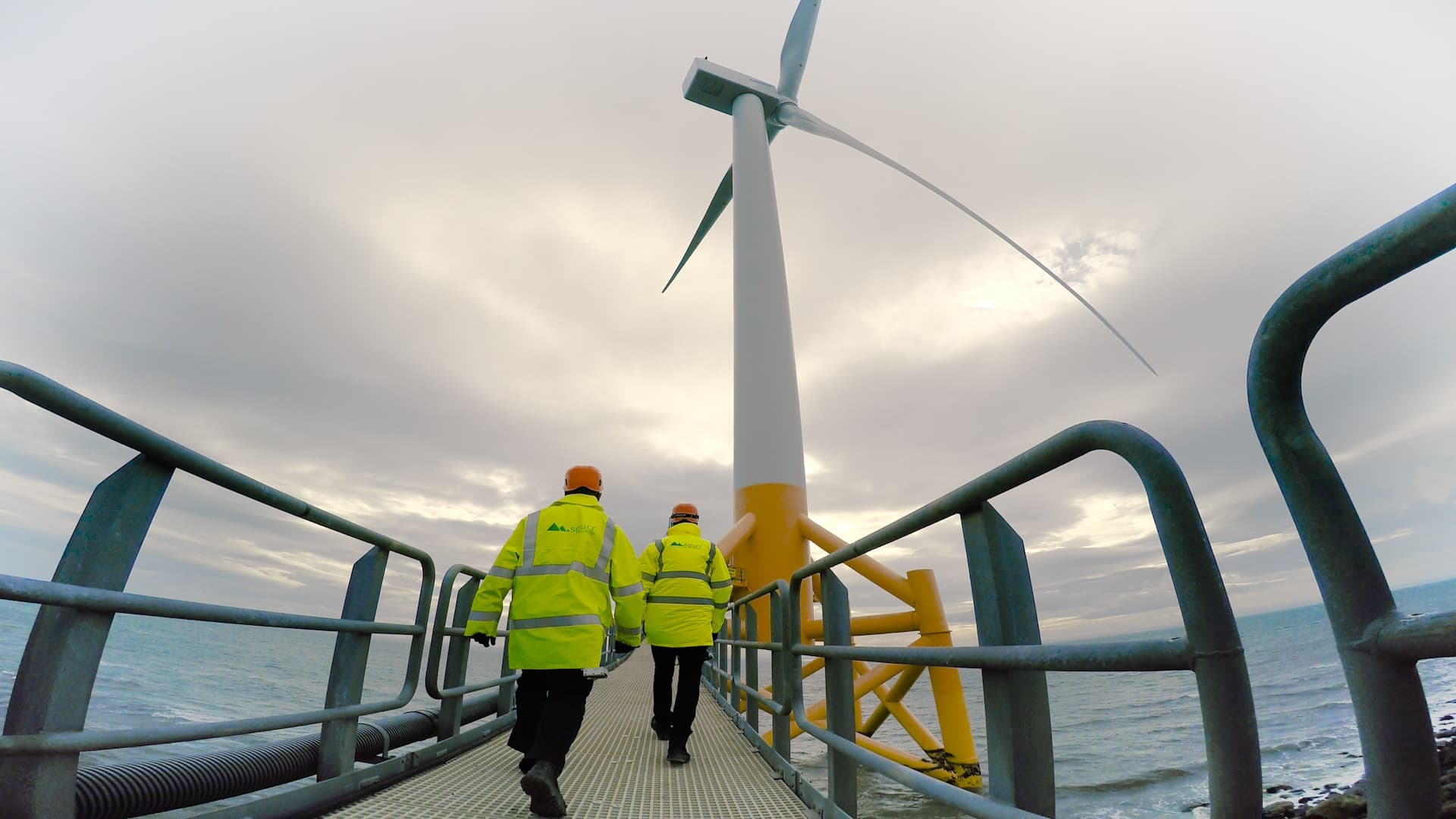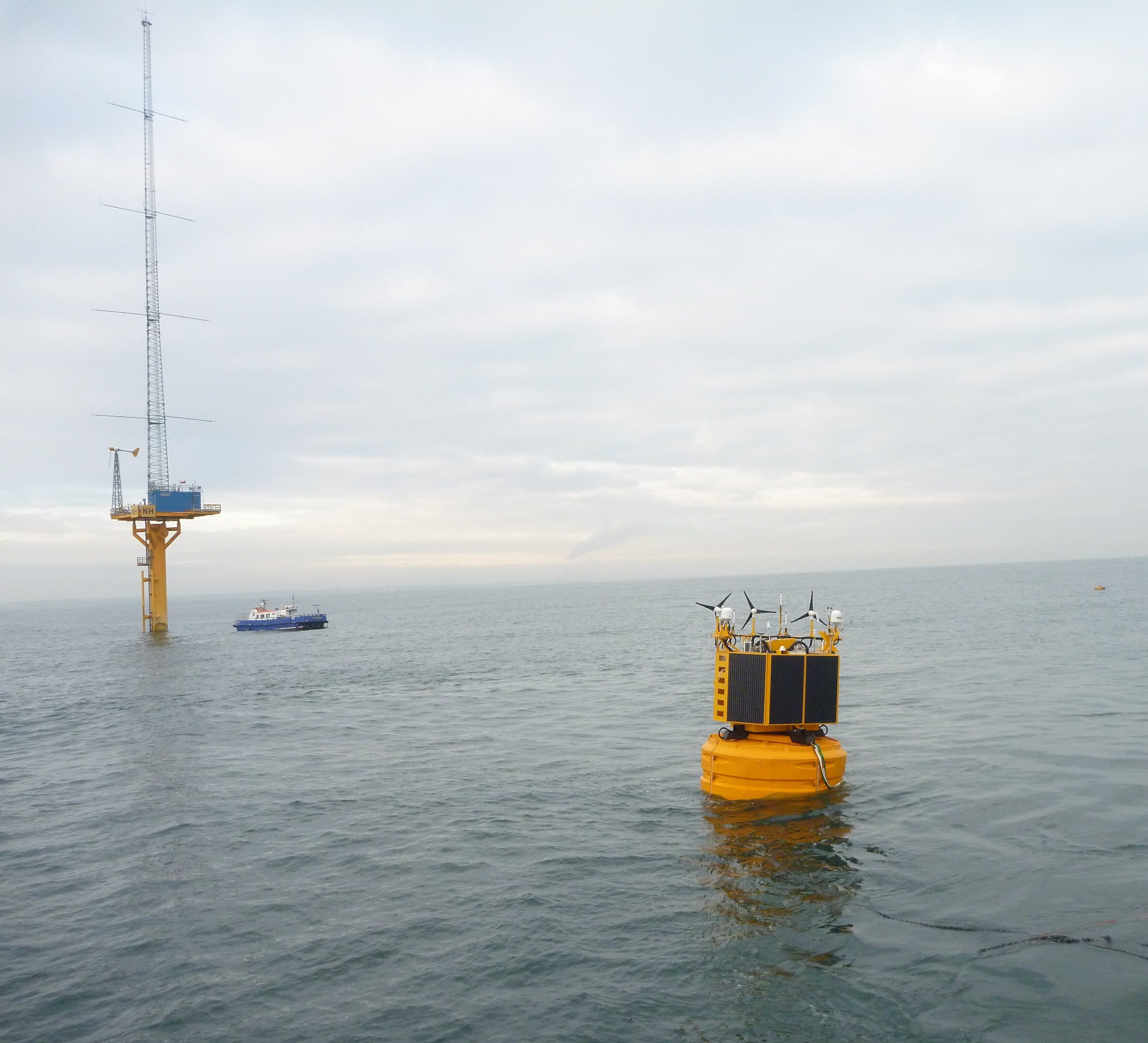
LIDAR TESTING
For decades, conventional meteorological (met) masts were installed in order to monitor the environmental conditions at new offshore renewable sites. The installations of met masts in the complex marine environment can be time-consuming and expensive.
The development of LiDAR (light detection and ranging) floating buoy products cuts down the long planning process and is easier to deploy. LiDARs use lasers to measure the environmental conditions, including wind direction and speed, at multiple heights.
At ORE Catapult, we offer two testing facilities in the UK that are able to host floating lidar trials. If you are a developer or offshore wind supply chain looking to test and demonstrate new LiDAR systems and methods, you can get in touch with us for more information.
LDT
Companies looking to test and verify new lidar technologies can now access ORE Catapult’s 7MW Levenmouth Demonstration Turbine (LDT), located just offshore in Fife.
With access to high-quality wind resources and environmental data, developers and manufacturers can compare and verify new remote sensing techniques against traditional methods.

NOAH
The National Offshore Anemometry Hub (NOAH) is installed three nautical miles off the coast of Blyth, Northumberland
As an offshore floating lidar verification service, it provides wind resource and environmental data to validate turbine demonstrations with the instrumentation and data management capability to be made available for future research collaborations. Leading industry players such as Axys and EOLOS have all successfully demonstrated their technologies at NOAH.

CONTACT OUR TEAM


